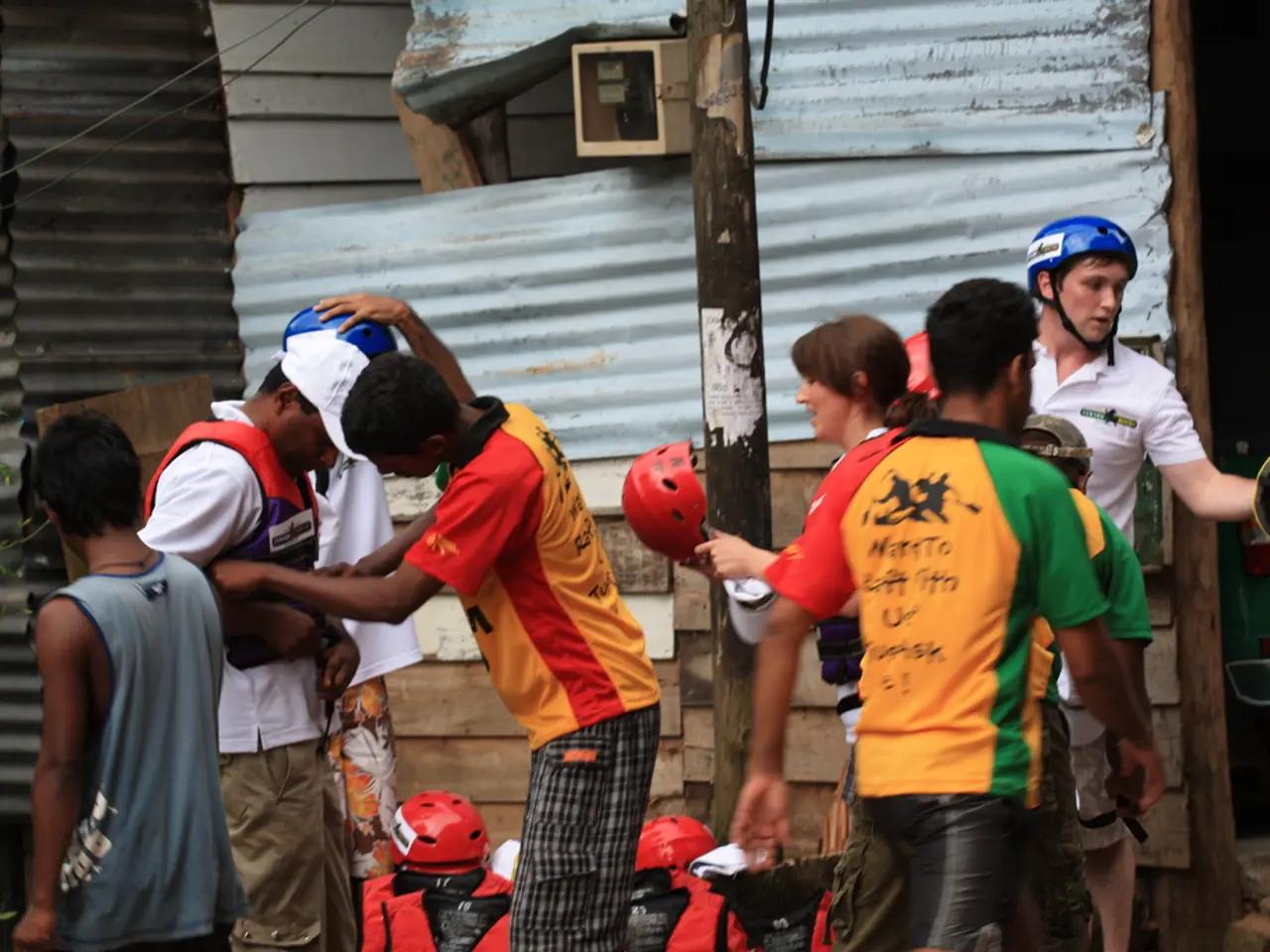Shingles: Understanding Its Risks, Treatment Options, and Preventive Measures
Shingles, also known as herpes zoster, is an infection that causes a painful rash. This condition primarily affects older adults or those with weakened immune systems who have previously had chickenpox [1][2][3].
Symptoms of Shingles
The common symptoms of shingles include a painful, blistering skin rash that often appears on one side of the body or face. The rash typically forms in a band or stripe pattern and may be preceded by itching, tingling, or burning sensations [1][2][3]. Other symptoms can include fever, headache, fatigue, and nerve pain, which can persist for months after the rash heals, causing severe prolonged pain known as postherpetic neuralgia [1][2][3].
Risk Factors
The varicella-zoster virus, the same virus that produces chickenpox, remains dormant in nerve tissue and can reactivate later, increasing the risk of developing shingles [1][3]. Other risk factors include age, especially adults over 50, as immune function naturally weakens with age [1][2][3][4]. Weakened immune systems due to medical conditions, immunosuppressive treatments, stress, and chronic or acute stress can also increase the likelihood of developing shingles [1][2][3][5].
Treatment
Treatment for shingles focuses on prompt administration of antiviral medications to reduce the severity and duration of the outbreak. Pain management through analgesics, topical therapies, and anti-inflammatory strategies is also important. Advanced interventions for persistent nerve inflammation or postherpetic neuralgia may involve spine and nerve specialists [2][3]. Supportive care is essential to prevent secondary infections and manage complications such as vision loss if the rash is on the face/eyes [1][3].
Prevention
The CDC recommends the recombinant zoster vaccine (Shingrix) as the best way to prevent shingles and its complications, including PHN [2][4]. The shingles vaccine is strongly recommended for adults aged 50 and older, dramatically lowering the risk of shingles outbreaks and associated nerve complications, including postherpetic neuralgia [2][4]. Widespread vaccination has reduced the incidence in vaccinated populations, helping protect millions of people who had chickenpox before the vaccine was available [2][4].
The shingles vaccine is also recommended for anyone aged 19 or older who has a weakened immune system [2]. Immunity from Shingrix remains strong for at least the first 7 years after vaccination [2]. It's important to note that approximately one out of three people in the United States will develop shingles in their lifetime [2].
To prevent the spread of shingles, it's essential to limit contact with rash blisters, wash hands frequently, avoid scratching or touching the rash, and avoid contact with certain individuals until the rash crusts over [2].
In summary, shingles is a painful and potentially debilitating condition that primarily affects older adults or those with weakened immune systems who have previously had chickenpox. Treatment combines antivirals and pain control, and the shingles vaccine is highly effective at prevention and reducing complications [1][2][3][4][5].
- Shingles can cause a painful, blistering skin rash that often appears on one side of the body or face, and may be preceded by itching, tingling, or burning sensations.
- The varicella-zoster virus, the same virus that produces chickenpox, remains dormant in nerve tissue and can reactivate later, increasing the risk of developing shingles.
- Other risk factors for shingles include age, especially adults over 50, as immune function naturally weakens with age, weakened immune systems due to medical conditions or immunosuppressive treatments, stress, and chronic or acute stress.
- Those with other immune disorders, other autoimmune disorders, chronic diseases, respiratory conditions, or compromised mental health may also be at an increased risk of developing shingles.
- Treatment for shingles focuses on prompt administration of antiviral medications to reduce the severity and duration of the outbreak, as well as pain management and supportive care to prevent secondary infections and manage complications.
- The CDC recommends the Shingrix vaccine as the best way to prevent shingles and its complications, including postherpetic neuralgia, for adults aged 50 and older, and for anyone aged 19 or older with a weakened immune system.
- To prevent the spread of shingles, it's essential to limit contact with rash blisters, wash hands frequently, avoid scratching or touching the rash, and avoid contact with certain individuals until the rash crusts over.
- In health and wellness, prioritizing skin care, eye health, and overall medical-condition management can play a role in lowering the risk of developing shingles and minimizing its impact on daily life.




